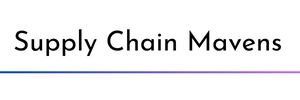by Gary A Smith, CPIM-F, CSCP-F, CLTD-F
“Go ahead and hate your neighbor / Go ahead and cheat a friend / Do it in the name of heaven / You’ll be justified in the end.” - Brian Potter and Dennis Earle Lambert
I have been an avid reader of books on the topics of leadership and business my entire career. Some were good, many were forgettable, but several of them have had a lifelong effect on me. One of those is In Search of Excellence by Tom Peters and Bob Waterman. What I took away from ISOE was that truly excellent organizations balance an innate sense of fairness with a people-first culture that is shared throughout the organization and with its suppliers and customers. The world of business is often cutthroat, vicious, and cold, but it doesn’t have to be. Companies that put all their stakeholders first – not just their investors – but also include their employees, suppliers, customers, and the public at large, are not only very profitable but have a much better chance of outlasting their competitors in the long run.
Peters and Waterman list eight characteristics for excellence in organizations:
A Bias for Action
Close to the Customer
Autonomy and Entrepreneurship
Productivity Through People
Hands-On, Value Driven
Stick to the Knitting
Simple Form, Lean Staff
Simultaneous Loose-Tight Properties
Note that profitability is not among the characteristics specifically listed. In the Authors’ Note to the 2003 edition, Peters and Waterman write, “profit is to business as breathing is to life.” So, while making a profit is essential to any business, it should not be the primary concern. It should remain in the background, barely conscious, meeting the needs of, but autonomic, to the organization. Profitability should only come to the fore during times of great stress and much like an athlete needs to consume (or conserve) oxygen during competition, an organization may also need to consume (or conserve) profit and cash during economically challenging times.
Change however, is inexorable – to survive, whether you are a species, person, or organization, change is required. All growth is based on it. But in business when change occurs that is radically different from the culture that built the organization, (e.g., JC Penney, Kmart) it creates chaos, confusing stakeholders, employees, customers, and even investors. Organizations must adapt to change yet still maintain true to their core principles and sense of fairness. Once adrift, they can be lost forever.
Developing a doctrine of fairness starts with building relationships. We learn their value from birth and can innately see the advantages of developing good relationships and the disadvantages of bad ones. The relationships formed with parents and siblings become patterns of the relationships formed with friends and acquaintances later in life. We learn that sharing is good because it satisfies both parties in the transaction and that greed is bad because while it may make one party feel good, the other party or parties will surely feel shortchanged, even cheated. This leads to an escalation of bad feelings and a breakdown in communication. A doctrine of fairness, however, keeps all parties satisfied, or at least assured that no one was taken undue advantage of in the situation.
How can companies establish doctrines of fairness within their organizations? First, the mission, vision, and culture of the organization must be aligned with each other and with the long-term strategies; and that all stakeholders are treated as partners to the organization. Within the organization all associates are treated fairly, and processes implemented consistently. All decisions made by management might not be popular, but if employees feel that decisions are implemented consistently and remain true to the organization’s vision, culture, goals, and strategy, people can feel that the organization has their best interests at heart.
Customers and suppliers must also be dealt with fairly with trust at the core of the relationship. This is where the organization’s supply chain becomes a key factor in developing a culture of fairness. The most powerful instrument of change within an organization is its supply chains, so it stands to reason that to develop an organization that is perceived as fair, the place to start is by building a supply chain based on equity.
The post-Covid world brought about a multitude of changes, many of which are technology based and have had the effect of shrinking the business world from the perspectives of both time and distance. Both factors reduce the cost of operations and help to make organizations more profitable. Business travel that was once required has been, in many cases, replaced by Zoom calls. Even the daily commute is now usually reserved only for those deemed essential as many organizations are now allowing employees to work from home one of more days of the week. The transition to digital supply chains has not only added speed, but also transparency to supply chains and other business processes, making fairness not only possible, but in many cases, required.
Read the book: In Search of Excellence
Gary welcomes your comments and feedback. You can email him at garys@supplychainmavens.net.

